Dien Bien Phu Today
Friends of Padre Steve’s World,
Sixty-six years ago the ragged and starving remnants of a French expeditionary Force was dying an excruciating death at Dien Bien Phu. They were the victims of a wrong war, a failed strategy, and the arrogance of their high command. They were sacrificed on the false belief that if they defeated the Main Force of the Viet Minh in a conventional battle, that they would win the war and dictate the terms of peace. But it was a battle in which they chose bad ground, and could not receive the full benefit of their more advanced weaponry because they were sent to fight in an area too far from their supporting forces. Likewise they were fighting a far more resourceful and better led adversary, that was not fighting for empire, but independence. Something that Americans who really know our history should understand.
Dien Bien Phu was an epic battle in a tragic war. Sadly, most people today neither know or care what happened in the valley where the small border post named Dien Bien Phu became synonymous with futile and forgotten sacrifice.
Over the years fewer and fewer remembrances took place. Some are in Vietnam and others in France. In 2018, French Prime Minister Edouard Philippe laid a wreath at the French Monument at Dien Bien Phu, accompanied by several elderly veterans of the battle. The French veterans were met with kindness by their former opponents.

French Prime Minister Edouard Philippe at Dien Bien Phu’s French Memorial
General Vo Nguyen Giap in 2011
Years before, on May 7th 2011 in Hanoi a small remembrance was held to mark the fall of Dien Bien Phu and honor the victor, 101 year old General Vo Nguyen Giap at his home. Giap was the last senior commander on either side at that time, and he died a year and a half later at the age of 102.
That 2011 ceremony was one of the few remembrances held anywhere marking that battle which was one of the watersheds of the 20th Century. A half a world away in Houston Texas a small group of French veterans, expatriates and historians laid a wreath at the Vietnam War Memorial. In Paris an ever shrinking number of French survivors used to gather each year on May 7th at 1815 hours for a religious service at the Church of Saint Louis des Invalides to remember the dead and missing of the French Expeditionary Corps who were lost in Indochina. A small number of other small ceremonies were held as late as 2014. There appear to be no services to honor their memory this year, especially since COVID 19 has ensured that no significant public memorials are possible, but even before this year the ranks of few men left from the battle pretty much have doomed such ceremonies,

Legionnaires of the Second Foreign Legion Parachute Battalion at Dien Bien Phu
This battle is nearly forgotten by time even though it and the war that it symbolized is probably the one that we need to learn. We didn’t learn them in Iraq, or Afghanistan.
Captured French soldiers are marched through the fields after their surrender at Dien Bien Phu in 1954. More than 10,000 French troops were captured after a 55 day siege . The French defeat ended nearly a century of French occupation of Indochina. (AP Photo/Vietnam News Agency)
French Prisoners
On May 8th 1954 the French garrison of Dien Bien Phu surrendered to the Viet Minh. It was the end of the ill-fated Operation Castor in which the French had planned to lure the Viet Minh Regulars into open battle and use superior firepower to decimate them. The strategy which had been used on a smaller scale the previous year at Na Son.
The French had thought they had come up with a template for victory based on their battle at Na Son in how to engage and destroy the Viet Minh. The plan was based on what the French called the “Air-land base.” It involved placing strong forces in an easily defensible position deep behind enemy lines supplied by air.
At Na Son the plan worked as intended. The French were on high ground, had superior artillery, and air Support close at hand. Likewise they were blessed by General Giap using human wave assaults against their fortress, which made the Viet Minh troops cannon fodder for the French defenders. Despite that, Na Son was a near run thing for the French and had almost no effect on Viet Minh operations elsewhere while tying down a light division equivalent and a large portion of French air power.
Viet Minh Regulars
The French took away the wrong lesson from Na-Son and attempted to repeat what they thought was success at Dien Bien Phu. The French desired to use Dien Bien Phu as a base of operations against the Viet Minh. Unfortunately the French chose badly. Instead of high ground that they chose at Na Son, they elected to occupy a marshy valley surrounded by hills covered in dense jungle. They went into the battle light on artillery, and the air head they established was at the far end of the range of French aircraft, especially tactical air forces which were in short supply. To make matters worse, General Navarre, commander of French forces in Indochina was informed that the French government was going to begin peace talks and that he would receive no further reinforcements. Nevertheless, he elected to continue the operation.
French Paras Drop into Dien Bien Phu
Once on the ground French logistics needs were greater than the French Air Force and their American contractors could supply. French positions at Dien Bien Phu were exposed to an an enemy who held the high ground, and had more powerful artillery. They also placed their units in defensive positions that were not mutually supporting, and were under constant surveillance by the Viet Minh. The terrain was so poor that French units were incapable of any meaningful offensive operations against the Viet Minh. As such they could only dig in and wait for battle. Despite this, many of their positions were not adequately fortified, and their artillery was in emplaced positions that were easily targeted by Viet Minh artillery, which were not hardened against artillery fire, and were completely exposed to the enemy once they opened fire.
Major Marcel Bigeard
The French garrison was a good quality military force composed of veteran units. It was comprised of French and Vietnamese paratroopers, known as Paras, Foreign Legion parachute and infantry units, French Colonials (Marines), North Africans and Vietnamese troops. Ordinarily in a pitched battle on a better choice of battle, these forces would have done well. But this was no ordinary battle and their Viet Minh opponents were equally combat hardened, well led and well supplied and fighting for their independence.
Many of the French officers including Lieutenant Colonel Langlais and Major Marcel Bigeard commander of the 6th Colonial Parachute Battalion were among the best leaders in the French Army. Others who served in Indochina including David Galula and Roger Trinquier would write books and develop counter-insurgency tactics which would help Americans in Iraq. Unfortunately the French High Command badly underestimated the capabilities and wherewithal of General Giap and his crack divisions on such a battlefield. This was not a counterinsurgency campaign, but a conventional battle in which the French discovered that they were in no position to win.
Viet Minh Supply Column
Giap rapidly concentrated his forces and built excellent logistics support. He placed his artillery in well concealed and fortified positions which could use direct fire on French positions. Giap also had more and heavier artillery than the French believed him to have. Additionally he brought in a large number of anti-aircraft batteries whose firepower, effectively used from well concealed positions enabled the Viet Minh to take a heavy toll among the French aircraft that attempted to supply the base.
Unlike at Na-Son, Giap did not throw his men away in human assaults. Instead he used his Sappers (combat engineers) to build protective trenches leading up to the very wire of French defensive positions. These trenches provided both concealment and protection from the French. In time these trenches came to resemble a spider web that enveloped the French base.
Without belaboring my point, the French fought hard as did the Viet Minh. However, one after another French positions were overwhelmed by accurate artillery and well planned attacks. The French vainly hoped for U.S. air intervention, even to the possibility of the United States would uses nuclear weapons against the Viet Minh. President Dwight Eisenhower was a realist, and despite the advice of men like General Curtis LeMay refused to exercise either a conventional or nuclear response to rescue the French from a debacle of their own making. Eisenhower understood that the American people were not about to enter another Asian war so soon after the armistice in Korea.
French Wounded Awaiting Medivac
Relief forces were unable to get through the Viet Minh and the severer terrain which limited their movements and prevented the use of armored and mechanized units. Thus, the garrison at Dien Bien Phu died, despite the bravery of the Paratroops. Colonials and Legionaries.
The French garrison was let down by their high command and their government and lost the battle due to inadequate logistics and air power. The survivors endured a brutal forced march of nearly 400 miles on foot to POW camps in which many died. Many soldiers who survived the hell of Dien Bien Phu were subjected to torture, including a practice that we call “water boarding.”
General Georges Catroux who presided over the official inquiry into the debacle at Dien Bien Phu wrote in his memoirs: “It is obvious that there was, on the part of our commanding structure, an excess of confidence in the merit of our troops and in the superiority of our material means.”
Despite the torture they endured, few French troops caved to the Viet Minh interrogations and torture but some would come away with the belief that one had to use such means to fight the revolutionaries. Some French leaders, units and their Algerian comrades would apply these lessons against each other within a year of their release from Viet Minh Captivity. French soldiers and officers were shipped directly from Indochina to Algeria to wage another protracted counterinsurgency often against Algerians that they had served alongside in Indochina. The Algerian campaign proved to be even more brutal and it was lost politically before it even began. The film Lost Command, and the novel The Centurions by Jean Lartenguy exposed this brutal truth, as did Alistair Horne’s Classic A Savage War of Peace did as well.
The March to Captivity
The wars in Indochina and Algeria tore the heart out of the French Army. The defeats inflicted a terrible toll. In Indochina many French career soldiers felt that the government’s “lack of interest in the fate of both thousands of missing French prisoners and loyal North Vietnamese…as dishonorable.” Divisions arose between those who served and those who remained serving NATO in France or Germany. This created bitter enmity between soldiers who had already endured the aftermath of the First World War, the defeat of 1940 by Germany, the division of Free French Forces, and those of the Nazi allied Vichy government.
Those divisions in the French military and society remained well after the war and those divisions were fully on display in Indochina and Algeria.
As a result France would endure a failed military coup which involved many who had fought in Vietnam and Algeria. Having militarily won that war these men called “The Centurions” by Jean Lartenguy had been turned into liars by their government. By military Standards they had successful used counterinsurgency tactics to win the war in a military sense, although their opponents still remained. These men were forced to abandon those who they had fought for and when President De Gaulle declared that Algeria would be granted independence, the men who had sacrificed so much mutinied against their government.
But the mutiny had little popular support, the people rallied around De Gaulle, and it failed. Many of the leaders, including senior generals and admirals who took part in, supported, or knew about the mutiny were tried, imprisoned, exiled or disgraced. The Colonial troops from Indochina, or North Africa who remained loyal to France were left without homes in their now “independent” nations. many Algerians fled to France as they were French citizens. Those from Vietnam, Laos, and Cambodia fled to wherever they could find refugee.
The French and their colonial ally survivors of Dien Bien Phu saw the battle as a defining Moment in their lives. . “They responded with that terrible cry of pain which pretends to free a man from his sworn duty, and promises such chaos to come: ‘Nous sommes trahis!’-‘We are betrayed.’
The effects of the wars in French Indochina, Algeria and Vietnam on the French military establishment were long lasting and often tragic. The acceptance of torture as a means to an end sullied even the hardest French officers. Men like Galula and Marcel Bigeard refused to countenance it, while others like General Paul Aussaresses never recanted.
One of the most heart rending parts of the Dien Bien Phu story for me is that of Easter 1954 which fell just prior to the end for the French:
“In all Christendom, in Hanoi Cathedral as in the churches of Europe the first hallelujahs were being sung. At Dienbeinphu, where the men went to confession and communion in little groups, Chaplain Trinquant, who was celebrating Mass in a shelter near the hospital, uttered that cry of liturgical joy with a heart steeped in sadness; it was not victory that was approaching but death.” A battalion commander went to another priest and told him “we are heading toward disaster.” (The Battle of Dienbeinphu, Jules Roy, Carroll and Graf Publishers, New York, 1984 p.239)
Like many American veterans of Vietnam, many of the survivors of Dien Bien Phu made peace and reconciled with the Vietnamese soldiers who opposed them. While many still regretted losing they respected their Vietnamese opponents and questioned the leadership of their country and army. Colonel Jacques Allaire, who served as a lieutenant in a battalion under the command of Major Marcel Bigeard reflected on his thoughts to a Vietnamese correspondent in 2014:
“I am now 92 years old and not a single day has gone by since the Dien Bien Phu loss that I haven’t wondered to myself about why the French army lost…Victory was impossible and too far away from us. The aircrafts were not able to give us relief. The French Government changed 19 times in nine years and that messed everything up. General Navarre did not know anything about the battlefield in Vietnam. After the Na San battle, the French commanders thought they could win and decided to attack at Dien Bien Phu, but they were wrong. It was Vietnamese soldiers who owned the hills, because it was their country… I respect my own enemies, who fought hard for national independence…Vietnam Minh soldiers were true soldiers with the will, courage and morality…”
As a veteran of Iraq whose father served in Vietnam I feel an almost a spiritual link to our American and French brothers in arms who fought at Dien Bien Phu, the Street Without Joy, Algiers and places like Khe Sanh, Hue City, the Ia Drang and the Mekong. When it comes to this time of year I always have a sense of melancholy and dread as I think of the unlearned lessons and future sacrifices that we may be asked to make, and not just military when it comes to the novel Coronavirus Pandemic.
Legionairs on the Street Without Joy
The lessons of the French at Dien Bien Phu and in Indochina were not learned by the United States as it entered Vietnam, Iraq or Afghanistan. Nor were the lessons of The French Algeria. It was an arrogance for which Americans paid dearly. I do not think that many in our political, media and pundits or military have entirely learned or that we in the military have completely shaken ourselves. We lost 54,000 dead in Vietnam, nearly 4500 in Iraq and so far over 2400 in Afghanistan, and 20,000 wounded which does not count many of the PTSD or TBI cases. Add the casualties suffered by our NATO allies the number of allied dead is now over 3500. Some 36,000 Afghan National Army soldiers and Police officers have been killed. Afghan civilian deaths are estimated between 100,000 and 400,000, not counting the wounded or those killed in Pakistan. In January 2018 the Pentagon classified data on Afghan military, police, and civilian casualties.
The Afghan debacle has spanned three Presidential administrations, so there accountability for it must be shared between Presidents Bush, Obama, and Trump, their administrations, the military high command, the Congress, and the civilian population of the United States which remained for the most part in a state of peace, despite a few inconveniences in domestic and international air travel. President Trump has shifted gears from the time he was a candidate when he pronounced the war “lost” to when addressed it as President on August 21st 2017. In his speech at fort Myer Virginia he said:
“When I became President, I was given a bad and very complex hand, but I fully knew what I was getting into: big and intricate problems. But, one way or another, these problems will be solved — I’m a problem solver — and, in the end, we will win.”
But he also said:
“Someday, after an effective military effort, perhaps it will be possible to have a political settlement that includes elements of the Taliban in Afghanistan, but nobody knows if or when that will ever happen…”
There are those even as we have been at war for almost 19 years in Afghanistan who advocate even more interventions in places that there is no good potential outcome, only variations on bad outcomes. I do not know how the President who calls himself a “Problem solver” or ”Wartime President” who will define winning, in war, or in the midst of a pandemic which has killed more Americans than were lost in combat in every military operation since the 1958 Lebanon Intervention. Bur now, in 2020, how many more American Soldiers, Sailors, Marines and Airmen will need die for a “victory” that we cannot even define? Likewise, how many Americans will have to die from a virus because their President and many other leaders minimize its potential for mass death, social and economic disruption, and division?
French Navy F-8 Bearcat at Dien Bien Phu
Like the French our troops who returned from Vietnam were forgotten.The U.S. Army left Vietnam and returned to a country deeply divided by the war. Vietnam veterans remained ostracized by the society until the 1980s. As Lieutenant General Harold Moore who commanded the battalion at the Ia Drang immortalized in the film We Were Soldiers recounted “in our time battles were forgotten, our sacrifices were discounted, and both our sanity and suitability for life in polite American society were publicly questioned.”
I think that will be the case for those of us who served in Iraq, Afghanistan, or Syria. Americans love to say they support the troops and are overwhelmingly polite and even kind when they encounter veterans. But that being said even as they do that they don’t are ignorant about our campaigns, battles, and sacrifices; and even worse fail to hold the government regardless of administration accountable for sending American troops into wars that they cannot win. That being said the Trump administration is talking up and ramping up for a possible showdown with Iran.
I guess that is why I identify so much with the men of Dien Bien Phu. The survivors of that battle are now in their nineties and dissolved their Veterans of Dien Bien Phu association in 2014 due to the difficulties most had in traveling.
For those interested in the French campaign in Indochina it has much to teach us. Good books on the subject include The Last Valley by Martin Windrow, Hell in a Very Small Place by Bernard Fall; The Battle of Dien Bien Phu by Jules Roy; and The Battle of Dien Bien Phu – The Battle America Forgot by Howard Simpson. For a history of the whole campaign, read Street Without Joy by Bernard Fall. A novel that has some really good insights into the battle and the French Paras and Legionnaires who fought in Indochina and Algeria is Jean Larteguy’s The Centurions.
I always find Fall’s work poignant. The French journalist served as a member of the French Resistance in the Second World War and soldier later and then became a journalist covering the Nuremberg Trials and both the French and American wars in Vietnam. He was killed on February 21st 1967 near Hue by what was then known as a “booby-trap” and what would now be called an IED while covering a platoon of U.S. Marines.
Sadly, most of the leaders in the Trump Administration, Congress, business, the greater civil population, and even some in the military ignore about COVID 19. The battle is not a conventional war. It is a battle against an unseen enemy that is not fighting a conventional war. We haven’t even understood how to wage such a war over the long term, much less how to deal with a non ideological, non religious, or non nationalistic enemy, such as a virus during a pandemic.
Now humanity is waging an asymmetrical conflict between an inhuman virus which adapts, infects, and kills without thinking, while human beings are divided between their desire to preserve life and those who do not care how many people die so long as their way of life is preserved, in the way that they knew it. However, the keys to defeating the virus, are similar to counterinsurgency doctrine. The Virus has to be identified, its victims quarantined, their contacts tracked, effective treatments developed, especially a vaccine that will protect people, and allow the resumption of normal life.
This isn’t rocket science. Until virologists and epidemiologists can develop effective vaccines and medicines to alleviate and mitigate the worst symptoms, governments and citizens must be willing to do practice non-pharmaceutical interventions (NPI) such as social distancing and wearing face masks, which are proven by history and science to slow rates of infection and death, whether compliance is voluntary or mandated by criminal law. No person has the right to prioritize their personal freedoms over the lives of others. This is part of the social contract developed in the earliest of human civilizations, and in the teachings of Jesus the Christ who told his disciples “This is my commandment, that you love one another as I have loved you. No one has greater love than this, to lay down one’s life for one’s friends. You are my friends if you do what I command you.”
If the Trump Administration choses to ignore science and history regarding the COVID 19 pandemic, it will experience the same humiliation that France encountered in Indochina and Algeria, as well as the American experience in Vietnam, Iraq, and Afghanistan. If it does so for purely economic reasons, being willing to sacrifice people for comics and profits, than its immorality and vice is too great to reconcile with any human understanding of the sacred value of all human life.
I do pray that we will learn the lessons before we enter yet another hell somewhere else, but then we already have doe so, since COVID 19 has already claimed as many American lives as were lost in every conflict since the 1958 intervention in Lebanon and every war, conflict, incident, or operation since.
Whether you understand it or not, the French debacle at Dien Bien Phu isn’t something that we cannot learn from today. One can never underestimate one’s enemy, or overestimate their ability to defeat it. Nor can they ignore the advice of historians, scientists, sociologists, physicians, and military leaders. Sadly, it seems to me that Donald Trump and his Administration and followers are more than willing to follow in the footsteps of all who in their interest willing to sacrifice the lives of the innocent, be they soldiers, Medical personnel, civilians, or others deemed life unworthy of life. So why not lead more people to death in order to maintain power and profits.
I won’t say anything else tonight, as Imam tired but anxious about the results of a COVID 19 test that Judy and I took late Monday afternoon as a result of a possible exposure Judy might have had last Friday. While I do not think that either of us will test positive, the current situation where so many Americans do not seem to give a damn about the lives of others in the midst of a highly infectious and deadly pandemic are now personal. As are the histories of those who promote their stupidity: leaders who dodged the draft, or never served at all, either on the front lines of combat or in the battle against infectious diseases decide that human lives are worth less than short term profits of their corporations or economic interests.
I am not a man of violence, but I agree with Dietrich Bonhoeffer who wrote: “If I sit next to a madman as he drives a car into a group of innocent bystanders, I can’t, as a Christian, simply wait for the catastrophe, then comfort the wounded and bury the dead. I must try to wrestle the steering wheel out of the hands of the driver.”
Likewise I believe like General Ludwig Beck who died in the attempt to kill Hitler and seize control of Germany from the Nazi regime that those entrusted with high office must live up to it. Beck said:
“Final decisions about the nation’s existence are at stake here; history will incriminate these leaders with bloodguilt if they do not act in accordance with their specialist political knowledge and conscience. Their soldierly obedience reaches its limit when their knowledge, their conscience, and their responsibility forbid carrying out an order.”
For me the testimony of both men is relevant today.
How can I be silent and retain any sense of morality today? My heart goes out to all the French, and their Colonials, and Foreign Legion Troops who died for an awful cause in Indochina, including those who fought for South Vietnam and lost everything by doing so, as well as the Americans sent their to prop up a regime that had little popular support, and was based on power religious and economic elites more than its own people.
Now we are faced with a pandemic that kills without discrimination. A pandemic that kills without remorse because it is not human, and which adepts itself to killing more people. This is especially true when human beings and their governments ignore or willingly break the basics of non pharmaceutical interventions, such as social distancing and face masks because they value their personal convenience over the life of others.
Peace
Padre Steve+

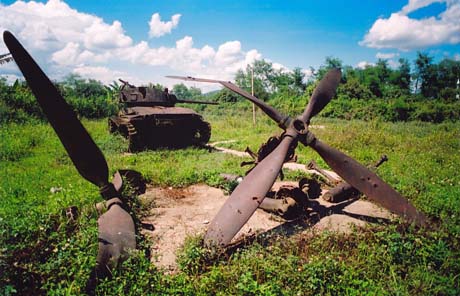
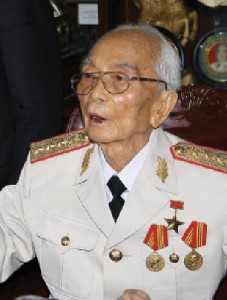



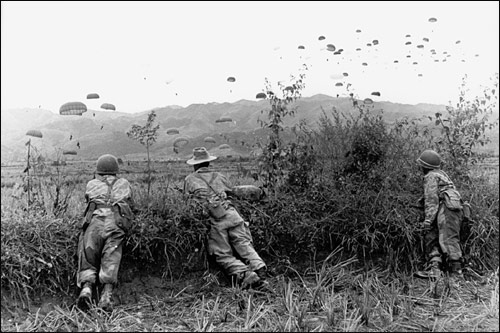
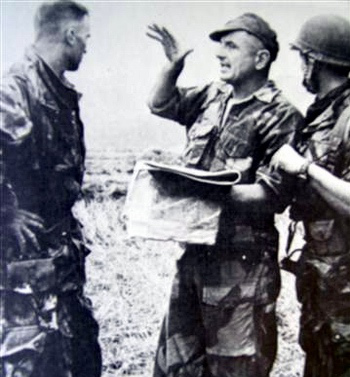
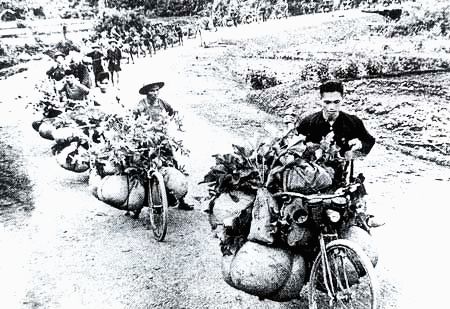
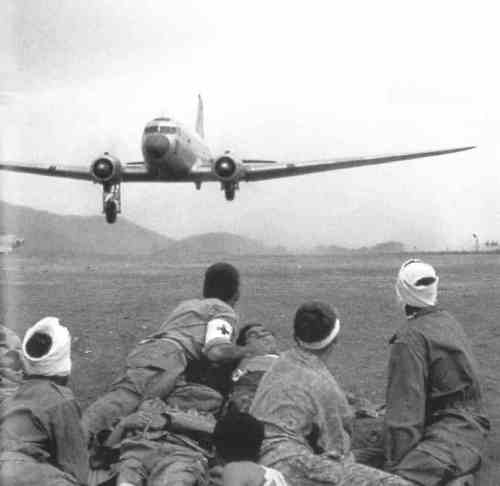

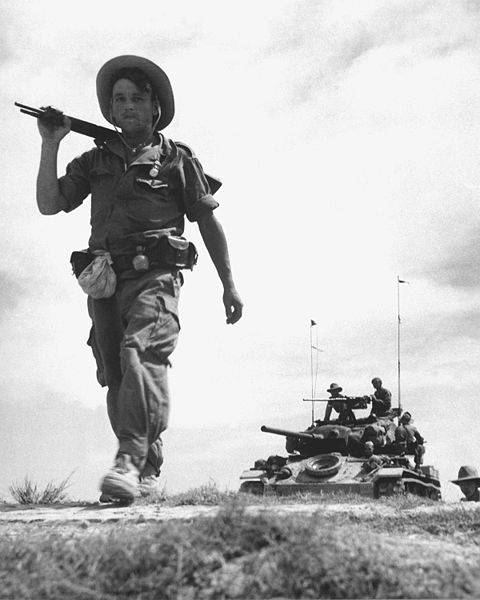
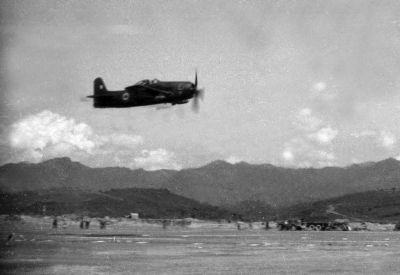





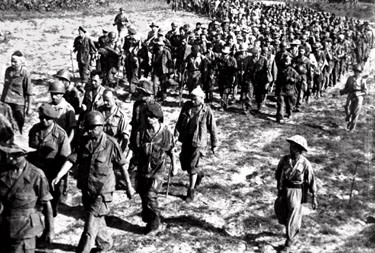















































 Foreign Legion in Algeria
Foreign Legion in Algeria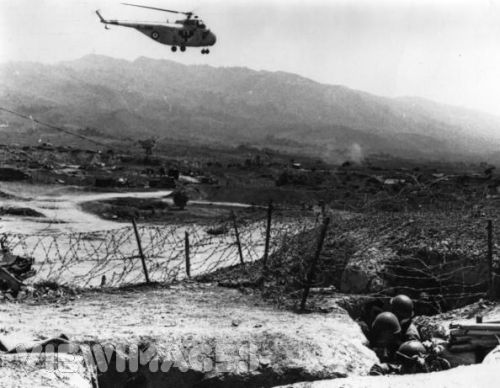 French at Dien Bien Phu
French at Dien Bien Phu Viet Minh Supply Columns were Never Stopped by French Air power or Artillery
Viet Minh Supply Columns were Never Stopped by French Air power or Artillery Joint US and ARVN Operation
Joint US and ARVN Operation French Prisoners after Dien Bien Phu: Many Survivors Would be Fighting in Algeria within Two Years
French Prisoners after Dien Bien Phu: Many Survivors Would be Fighting in Algeria within Two Years French Troops and Tanks in Indo-China: Road Bound Forces were often Defeated by Viet- Minh Forces
French Troops and Tanks in Indo-China: Road Bound Forces were often Defeated by Viet- Minh Forces US Heavy Forces including Armor had Little Utility in Many Parts of Vietnam
US Heavy Forces including Armor had Little Utility in Many Parts of Vietnam NVA Main Forces
NVA Main Forces US Veterans of Vietnam Would Return to a Deeply Divided Country that turned its Back on Them for Years
US Veterans of Vietnam Would Return to a Deeply Divided Country that turned its Back on Them for Years Training Team Base in Afghanistan: Some of these Bases Have proven Vulnerable to Well Planned and Coordinated Taliban Attacks
Training Team Base in Afghanistan: Some of these Bases Have proven Vulnerable to Well Planned and Coordinated Taliban Attacks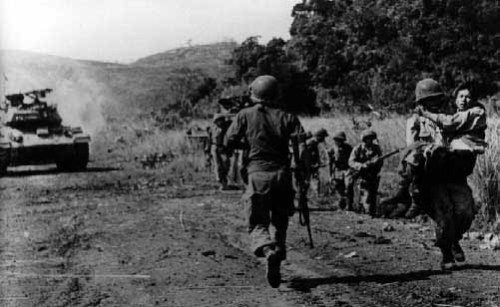 1st Foreign Legion Parachute Regiment in Indo-China
1st Foreign Legion Parachute Regiment in Indo-China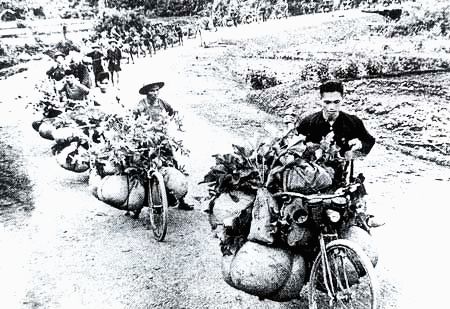 Primitive but Effective- Viet Minh Supply Column The French Could Never Stop them
Primitive but Effective- Viet Minh Supply Column The French Could Never Stop them Isolated and Besieged Dien Bien Phu
Isolated and Besieged Dien Bien Phu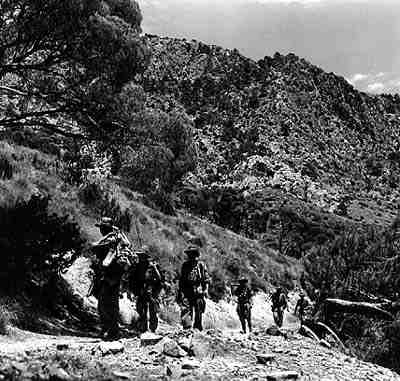 Foreign Legion in Algeria
Foreign Legion in Algeria Surrender at Dien Bien Phu
Surrender at Dien Bien Phu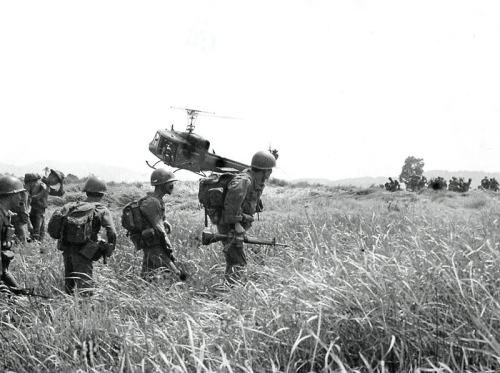 Joint US-ARVN Operation
Joint US-ARVN Operation The Author and Advisors with Iraqi Border Troops near Syria
The Author and Advisors with Iraqi Border Troops near Syria Taliban Insurgents
Taliban Insurgents USMC Training Team in Afghanistan
USMC Training Team in Afghanistan